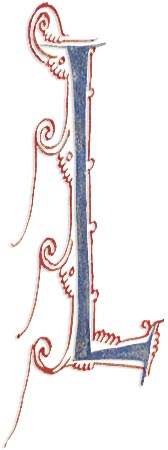Advice on Behaviour and Dress

‘For the woman who dresses herself elaborately, either her head or body, to tempt men, may be called a snare of the Devil’
‘Le Manuel des Péchés’ and the ‘Mirur’ are 13th-century works of instructional literature in Anglo-Norman. The ‘Manuel’ gives advice on the consequences of sin, while the ‘Mirur’ reflects on Biblical texts. In the next century ‘Speculum Vitae’ and the ‘Lay Folks’ Catechism’, which comment in a similar way on correct religious behaviour, were written in English.
Women reading these books (or hearing them read aloud), would have learnt that sexual misconduct was a danger to their mortal soul. Moreover, although men would be condemned for their lustful thoughts, it was also a sin for women to attract men’s attention by dressing themselves well and adorning themselves. The idea of woman as temptress can be traced back to Eve in Paradise. Society’s responses to women’s modest attire, headscarves, veils and hijabs continue to be controversial today.
A contrasting example of bawdy, entertaining literature is also given here, in an extract from the French 13th-century fabliau ‘La Veuve’. This type of tale is known for its stereotypical characters of a much lower social class than those encountered in courtly romances. The ‘heroine’ in ‘La Veuve’, a sexually voracious widow, is typical of the genre.
The following extracts from literary texts give some insights into criticism of women’s dress and behaviour in medieval society.
Next page: View documents